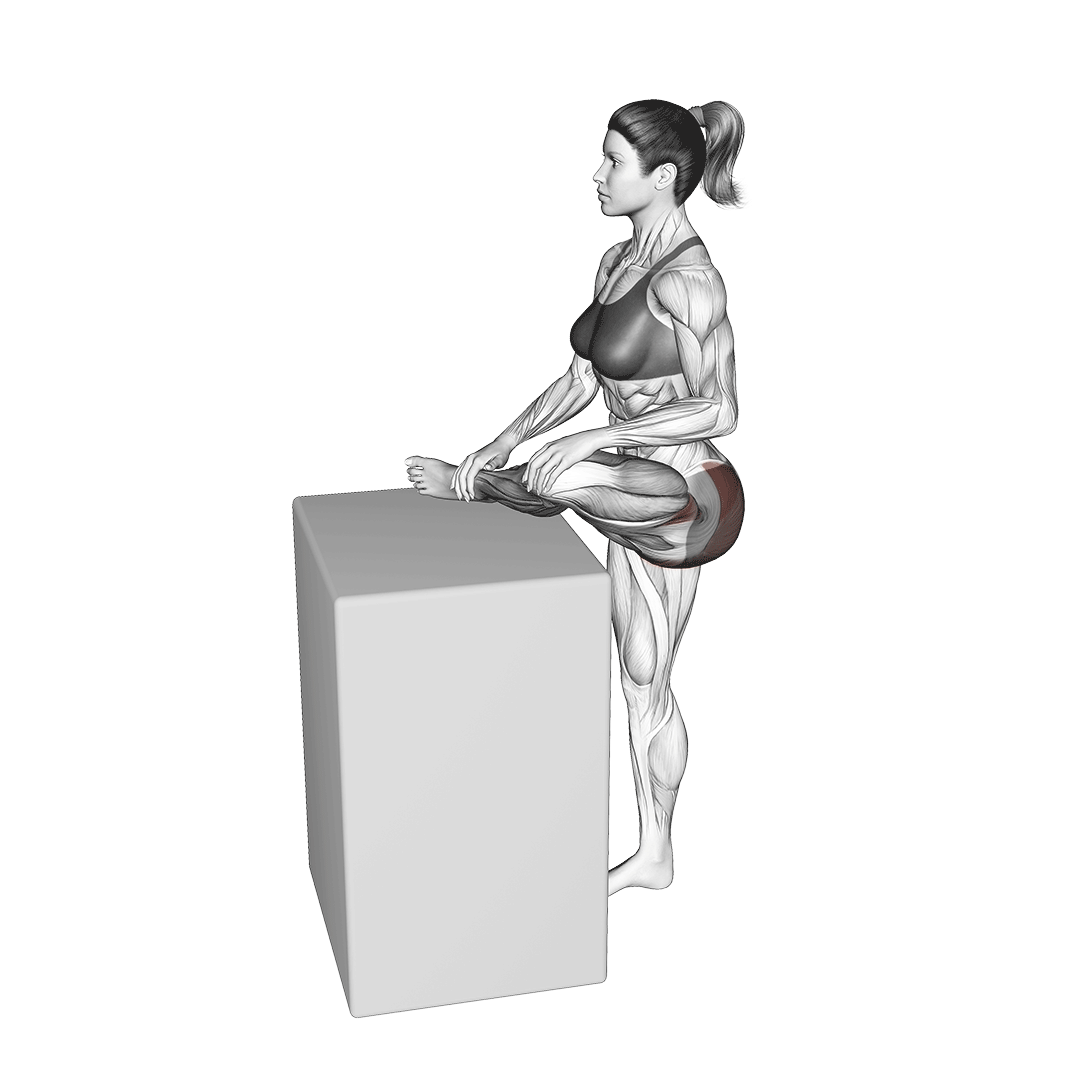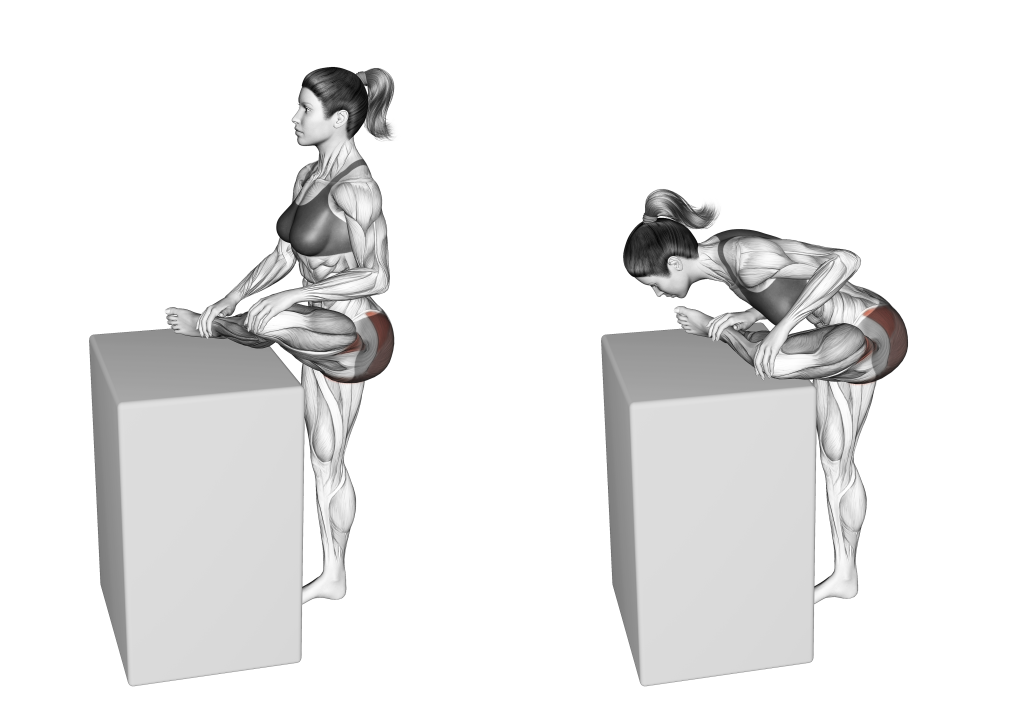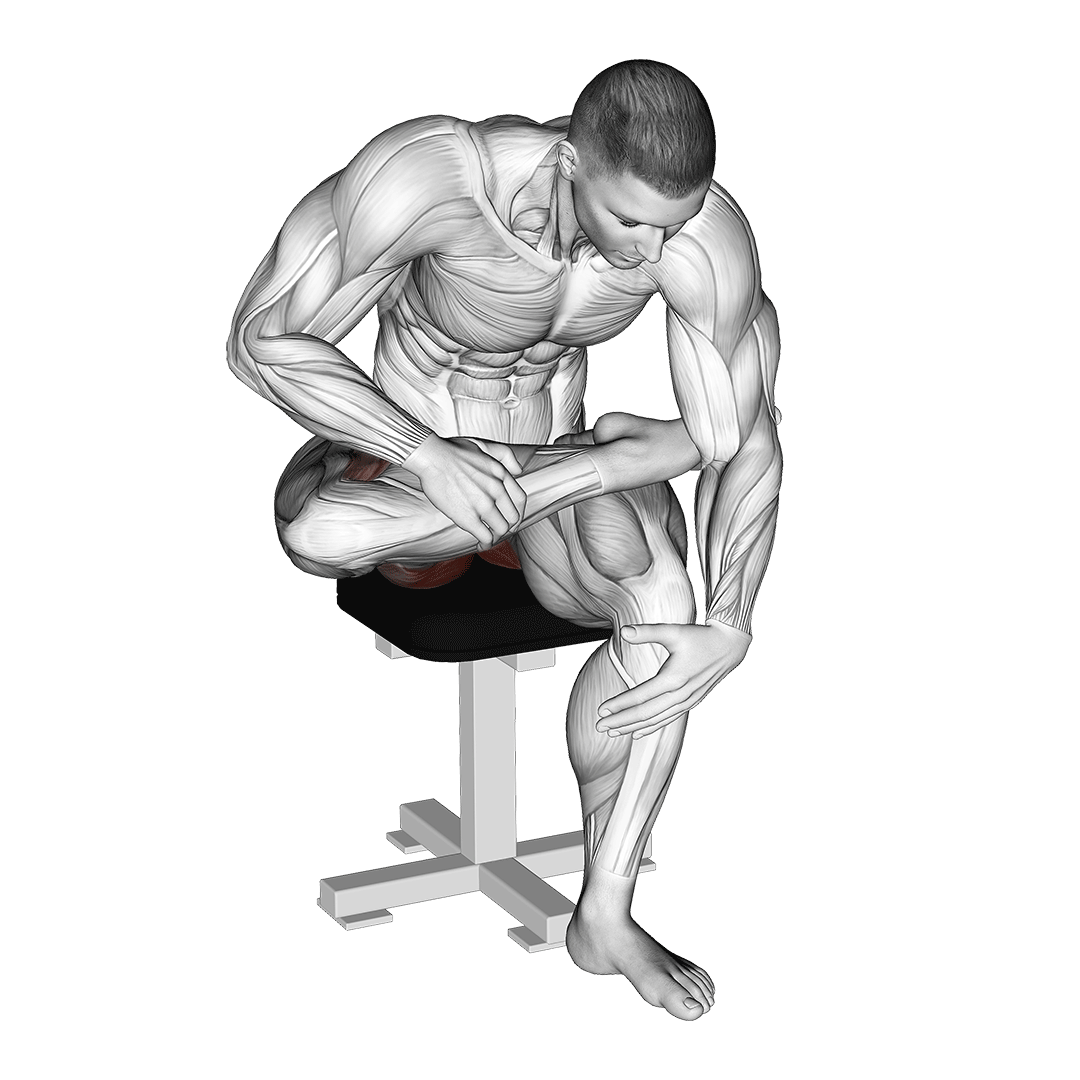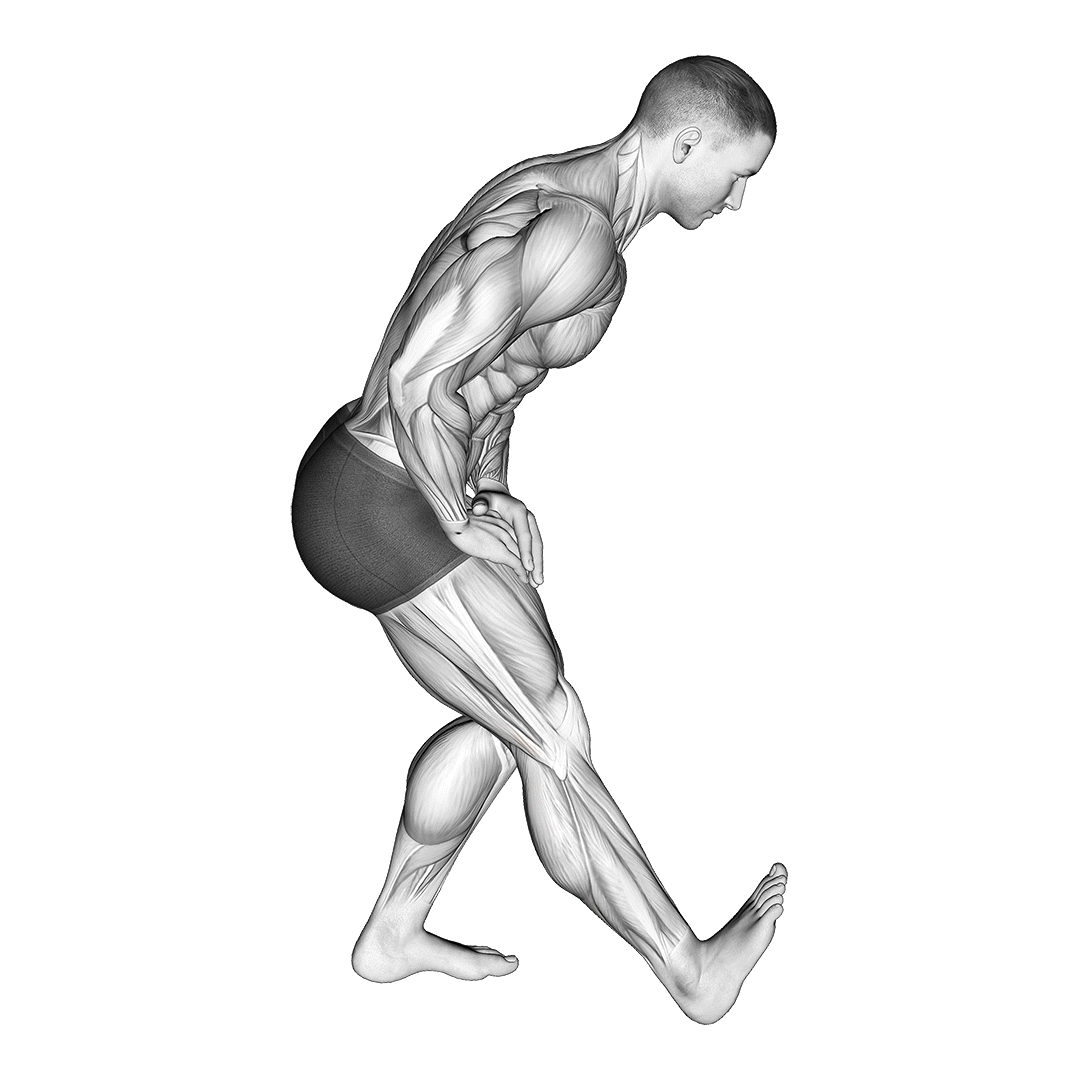Standing Piriformis Stretch: Benefits, Muscles Targeted, and More
Whether to help manage piriformis syndrome or simply because of poor posterior chain mobility, the standing piriformis stretch is an invaluable exercise.
Because of its convenience and numerous benefits, the standing piriformis stretch is commonly performed by athletes, recovering patients and at-home yoga enthusiasts alike.
In this article, we will go over how to perform a basic standing piriformis stretch - as well as its many benefits and a few common mistakes you may be making.
What is the Standing Piriformis Stretch?
The standing piriformis stretch is an active static stretch primarily involving hip and knee flexion while in a one-legged position.

Most often, the standing piriformis stretch is performed so as to relieve symptoms of piriformis-related sciatica. However, in certain cases, simple poor mobility of the piriformis and other nearby posterior chain muscles is also corrected through the piriformis stretch.
Remember to first consult a medical professional prior to attempting to stretch an area you suspect to be injured. Sciatica in particular can be quite sensitive to moving the wrong muscle in the wrong direction, and as such caution should be taken.
A Note on Using the Standing Piriformis Stretch for Sciatic Nerve Issues
Occasionally, conditions like a compressed sciatic nerve or piriformis syndrome can present the same symptoms as gluteal tendinopathy or even a torn hamstring.
This is the reason why seeking a proper medical diagnosis is absolutely vital, as the steps to correct a hamstring tear are the exact opposite of those used for sciatica. To avoid making your condition worse, always speak to your doctor first.
How to Do a Standing Piriformis Stretch
To perform a standing piriformis stretch, the exerciser will first begin by standing with both feet slightly wider than hip-width apart. Those with difficulty balancing on one leg may use a sturdy table or wall to aid with this stretch.
From this position, the exerciser then crosses one shin over the opposite thigh by bending at the knee, forming a square with their legs and hips. If the shin is sliding off the opposite leg, use one hand to fix it in place.
Now on one leg, the exerciser will bend their standing knee, hinge forward at the waist and push their hips back until in a half-squat. A stretch should be felt along the glutes and lower back. Hold for up to a minute before switching sides.
What Muscles and Joints are Targeted by the Standing Piriformis Stretch?
As one can guess from its name, the standing piriformis stretch primarily targets the piriformis muscle of the lower posterior chain.

However, in addition, the gluteus maximus, gluteus medius and quadratus femoris are all stretched due to their proximity to the piriformis.
In terms of joints stretched, it is primarily the knee joint that engages in a wide range of movement - in this case such movement being flexion.
What are the Benefits of Doing the Standing Piriformis Stretch?
Clued in by how multi-purpose the standing piriformis stretch can be, its benefits are considerably wide ranging. We’ve listed them below.
Relieves Sciatica Pain and Other Symptoms
The main reason why the standing piriformis stretch is performed is to alleviate sciatic nerve compression.
Often, when sciatic nerve pain is present, the piriformis muscle of the posterior chain is inflamed or otherwise positioned in such a way that the sciatic nerve is pinched or crushed. This can cause symptoms of pain, tingling and numbness along one side of the lower body.
Less severe cases of the condition will often call for active recovery work including static stretches and targeted resistance exercise so as to improve posterior chain function - one of which is the standing piriformis stretch.
Improves Mobility and Stability of the Posterior Chain
Even if no sciatica is present in the performer, the standing piriformis stretch is still excellent for improving general mobility in the lower posterior chain.
The hamstrings of the standing leg alongside both sides of the glutes will both benefit from a wider range of movement, and greater stability while within this range.
Generally, the deeper the squat and the greater the hinge equates to greater stretching of the hamstrings and glutes respectively.
Primes Glutes and Hamstrings for Exercise
In certain cases, the standing piriformis stretch is sufficient for directing blood flow to the lower posterior chain. This can prime them for a bout of exercise, especially resistance training involving significant loading of the glutes and hamstrings.
Unfortunately, there is indeed some debate as to whether static stretches like the standing piriformis stretch are suitable prior to exercise. To stay on the safe side, it is best to only hold this particular stretch for 30 seconds per side at most if using it as a warm-up.
Simple and Can be Performed Anywhere
The standing piriformis stretch is as simple a stretch as they get. Virtually no equipment or space to lie down is required, allowing it to be done in tight spaces or at the office.
Remember to keep one arm against a table or wall so as to aid with balance.
Common Standing Piriformis Stretch Mistakes
Although the standing piriformis stretch is relatively simple, avoid the following mistakes so as to avoid sustaining an injury.
Failing to Hinge at the Hips and Waist
The main area of focus with the standing piriformis stretch is the glutes.
In order to properly elongate the muscles in this part of the body, the lower back should be extended away from the pelvis, pulling the glutes and other nearby muscles away from their points of attachment.
The standing piriformis stretch achieves this by hinging forwards at the waist while pushing the hips back, maximizing the distance with which the posterior chain is stretched.
Squatting Too Deep
The standing piriformis stretch is not meant to involve a full depth one-legged squat, as doing so will not only turn it into a Hawaiian squat, but also shift emphasis away from the piriformis in favor of the quadriceps.
For the best results, squatting to only half depth where the hips are still above the knees is best.
Leaning Towards Working Side
Leaning in the same direction as the bent leg will reduce the distance between the lower back and the piriformis, reducing the effectiveness of the stretch itself.
Ensure that the upper body is completely even as it bends at the hips and waist. This will not only help maximize the length to which the glutes are stretched, but also aid in maintaining balance despite standing on only one leg.
Bending Standing Knee Inwards
More of a general squatting mistake than simply with the standing piriformis stretch; when lowering into the half-squat stance, the standing leg should bend forwards or outwards, tracking behind the toes if possible.
Allowing the knee to bend inwards can place excess stress on the knee joint itself, as well as risk the exerciser’s balance.
Alternatives to the Standing Piriformis Stretch
If remaining in a standing position is not possible for you - or if the standing piriformis stretch is simply ineffective - try the three following alternatives out.
Seated Piriformis Stretch
The seated form of piriformis stretch also bends the afflicted leg over the thigh of the opposite leg.

However, unlike the standing variation, there is virtually no risk of falling and a greater stretch may be achieved by bending the torso even further towards. This can be achieved by leaning the upper body over a desk or ledge while performing the stretch.
Facedown Leg Raises
Facedown leg raises are both an exercise and a stretch meant to target the posterior chain muscles - piriformis included.
In order to use facedown leg raises as an exercise, simply lie on your stomach with the legs parallel to the rest of the body and contract the glutes so as to raise the legs upwards, keeping it extended throughout.
Alternatively, to use the facedown leg raise as a stretch, lie with the legs at a lower elevation to the hips so as to lengthen the piriformis and other nearby muscles.
Standing Hamstring Stretch
The standing hamstring stretch is an entry level static stretch that can be considered an easier form of standing piriformis stretch.

To perform it, simply stand with the feet hip-width apart and extend one leg outwards, pointing the heel towards the ground. The other leg bends at the knee so as to further lengthen the posterior chain muscles.
The standing hamstring stretch is ideal as an alternative to the piriformis stretch for those who have trouble maintaining balance, or for those who cannot bend their shin over the opposite leg.
Frequently Asked Questions (FAQ)
Is Standing Good for the Piriformis?
Yes.
Standing will help release tension in the piriformis muscle, especially if you have been seated for an extended period.
How Do I Get my Piriformis Muscles to Release?
Depending on your specific reason for relaxing the piriformis muscle, anything from low-impact static stretches to foam rolling the glutes out may be needed.
Try placing a foam roller at the top of the glutes and roll the body over it until the roller is at the bottom of the glutes. This will help release tension throughout the entire buttocks.
How do I Know if my Piriformis is Tight?
Although not always the case, a tight or injured piriformis will present symptoms of muscular spasms in the glutes, pain radiating from the inner-middle section of the buttocks or even the more obvious unilateral symptoms of sciatica.
Closing Thoughts
The standing piriformis stretch is just one of dozens of ways you can relieve tension in the piriformis. If it doesn’t quite meet your needs - don’t worry, there is likely the perfect exercise out there for you.
That being said, if you are performing the standing piriformis stretch because you suspect an injured piriformis or even sciatic nerve compression, it is best to first speak to a doctor.
Do not attempt to self-rehabilitate injuries unless otherwise instructed by a medical professional.
References
1. Koes BW, van Tulder MW, Peul WC. Diagnosis and treatment of sciatica. BMJ. 2007 Jun 23;334(7607):1313-7. doi: 10.1136/bmj.39223.428495.BE. PMID: 17585160; PMCID: PMC1895638.
2. Park JC, Shim JH, Chung SH. The effects of three types of piriform muscle stretching on muscle thickness and the medial rotation angle of the coxal articulation. J Phys Ther Sci. 2017 Oct;29(10):1811-1814. doi: 10.1589/jpts.29.1811. Epub 2017 Oct 21. PMID: 29184293; PMCID: PMC5684014.

